Body length: 6–14 mm.
Eyes: eye interommatidial setaeseta:
a sclerotized hair-like projection of the cuticle
absent, eye deeply emarginateemarginate:
notched at the margin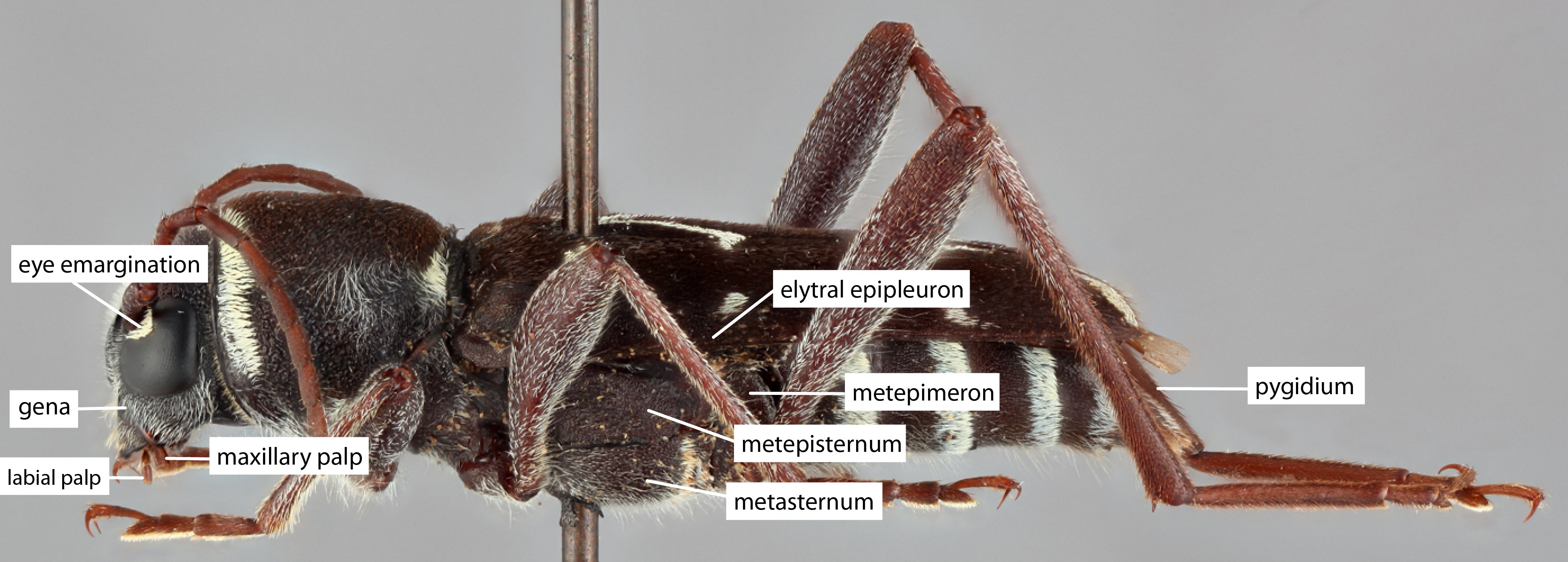 > half width, eye ommatidial density fine.
> half width, eye ommatidial density fine.
Antennaeantenna:
in larval and adult insects, paired segmented appendages, borne one on each side of the head, functioning as sense organs and bearing a large number of sensilla
: antennal length reaches between basebase:
the part of any appendage or structure that is nearest the body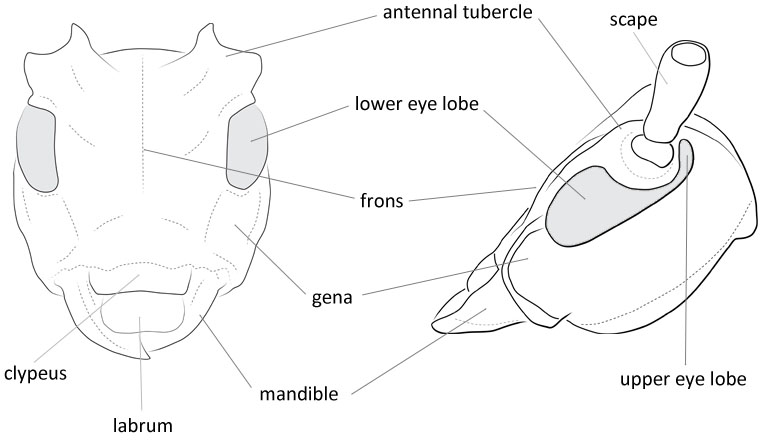 and end of elytraelytron:
and end of elytraelytron:
the leathery forewing of beetles, serving as a covering for the hind wings, commonly meeting opposite elytron in a straight line down the middle of the dorsum in repose
, antennal flagellar segments elongateelongate:
much longer than wide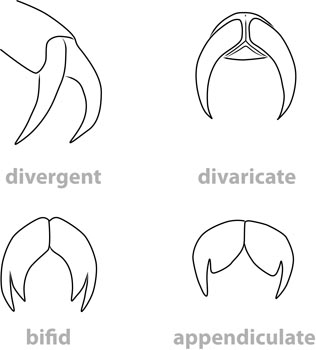 , scapescape:
, scapescape:
the first proximal segment of the antenna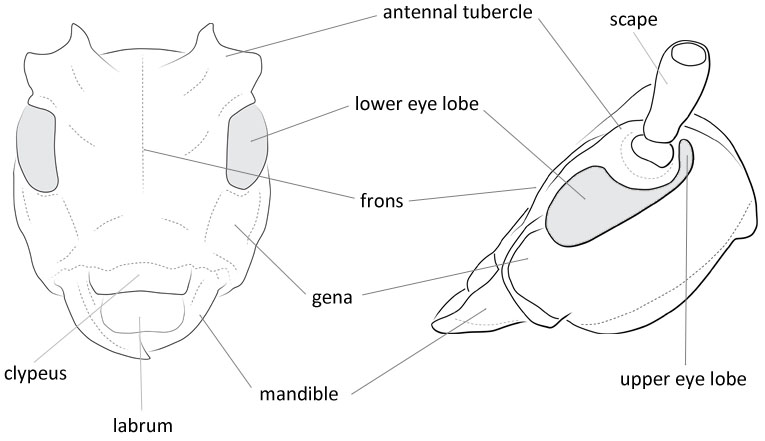 smooth/punctate at apexapex:
smooth/punctate at apexapex:
end of any structure distad to the base , antennal segment 3 > scapescape:
, antennal segment 3 > scapescape:
the first proximal segment of the antenna .
.
Pronotumpronotum:
the upper and dorsal part of the prothorax : pronotumpronotum:
: pronotumpronotum:
the upper and dorsal part of the prothorax shape longer than wide, pronotumpronotum:
shape longer than wide, pronotumpronotum:
the upper and dorsal part of the prothorax lateral armature absent.
lateral armature absent.
Prosternum: prosternal processprosternal process:
a posterior extension of the prosternum between the coxae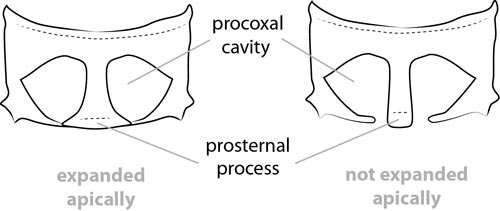 dilated at apexapex:
dilated at apexapex:
end of any structure distad to the base , rarely not dilated at apexapex:
, rarely not dilated at apexapex:
end of any structure distad to the base , procoxal cavities open posteriorly.
, procoxal cavities open posteriorly.
Elytraelytron:
the leathery forewing of beetles, serving as a covering for the hind wings, commonly meeting opposite elytron in a straight line down the middle of the dorsum in repose
: elytral length reaching or close to end of abdomen, elytral apicesapex:
end of any structure distad to the base
emarginate or with tooth or spinespine:
a protuberance with an acute (sharp) distal end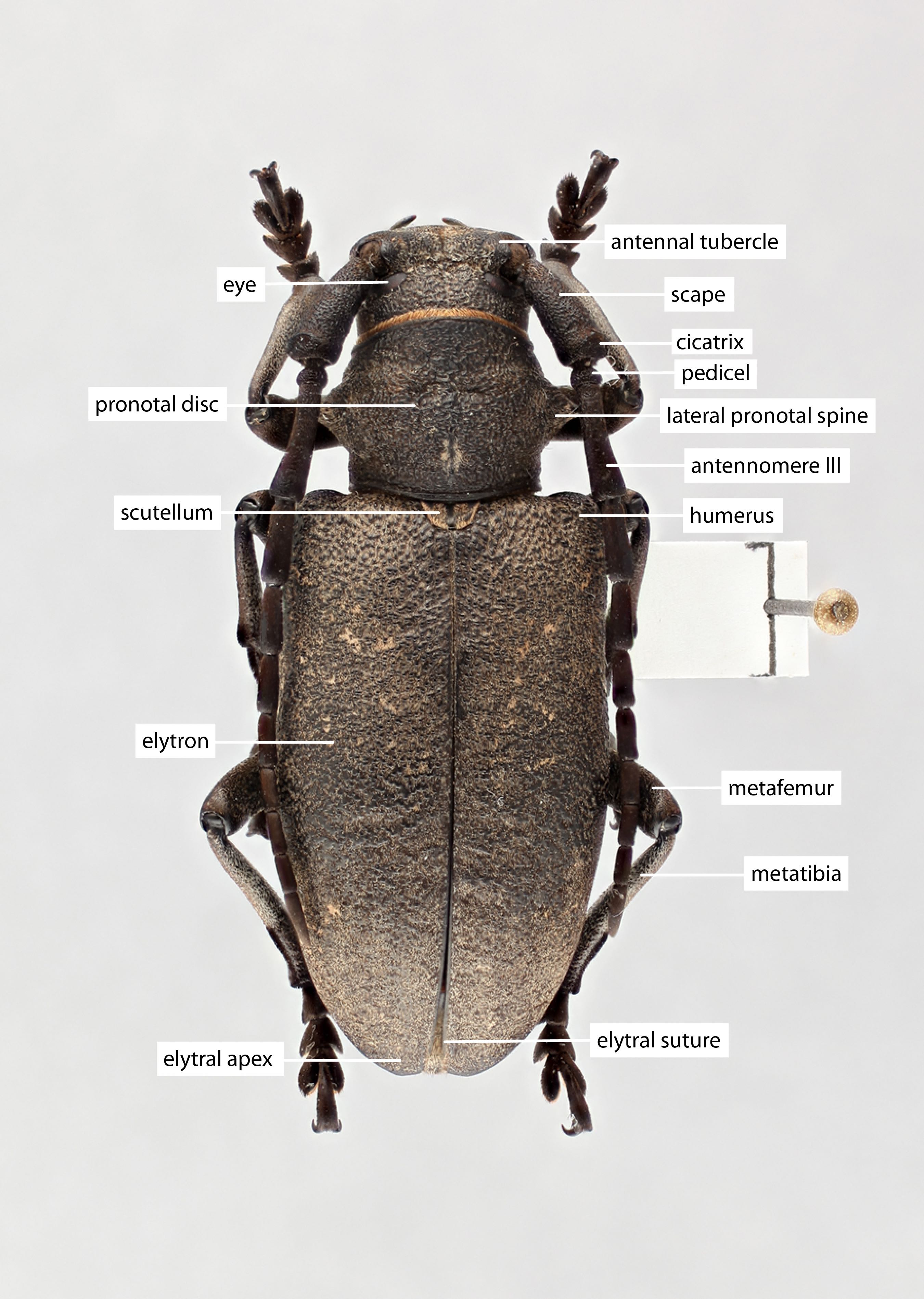 , elytral color pattern present.
, elytral color pattern present.
Legs: visible tarsomerestarsomere:
subdivision or article of the tarsus, usually numbering from two to five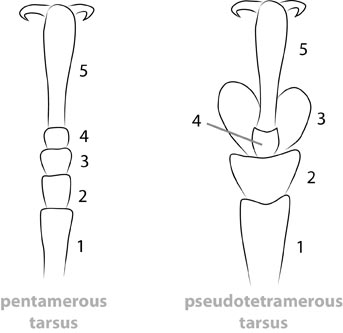 : 4, femora clavateclavate:
: 4, femora clavateclavate:
thickening gradually toward the tip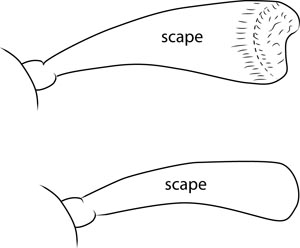 , protibial spursprotibial spur:
, protibial spursprotibial spur:
sclerotized spine(s) located at the distal tibia; can be single, double, or absent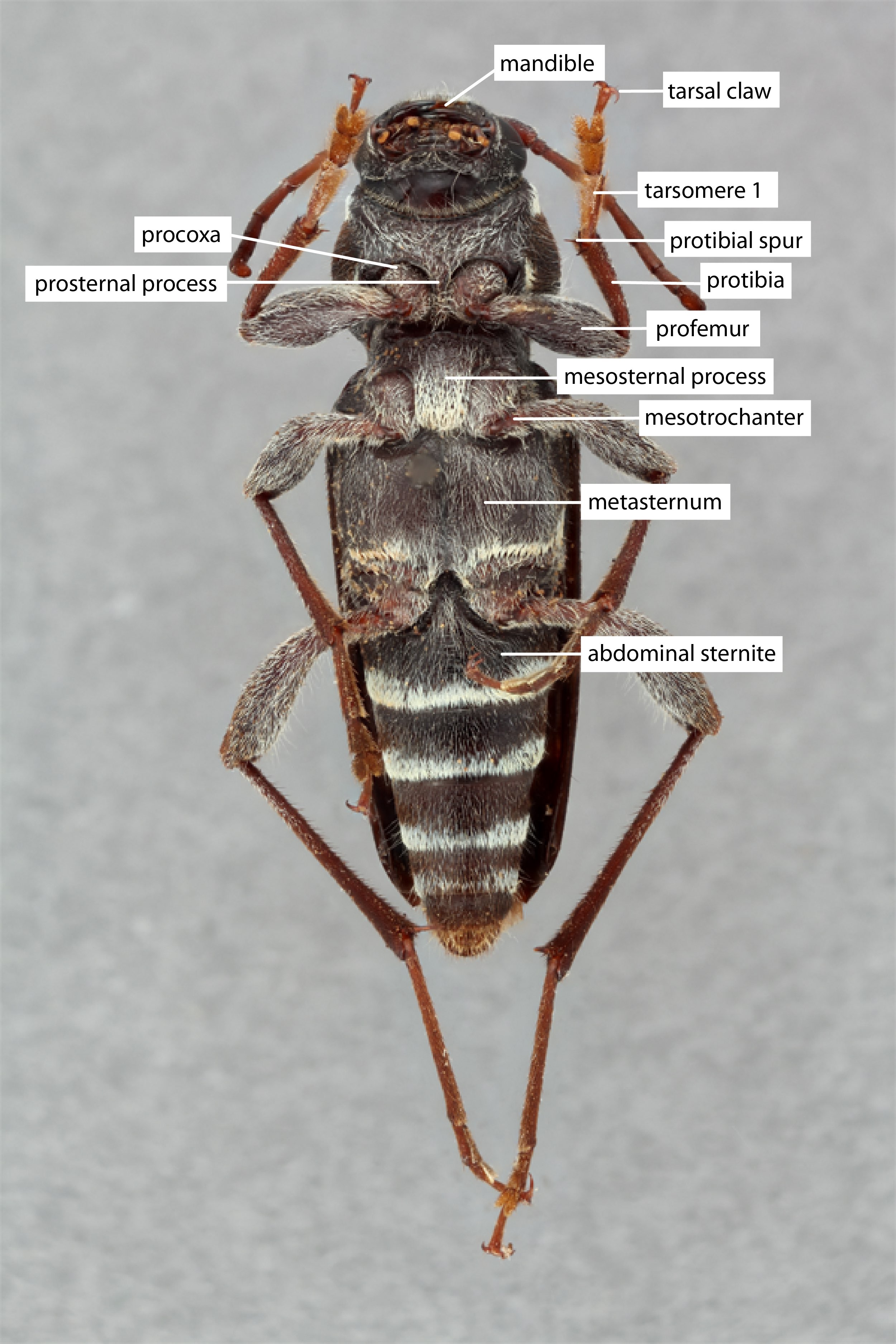 : 2, tarsal clawstarsal claw:
: 2, tarsal clawstarsal claw:
usually paired claws of the pretarsus, at the distal end of the leg simple.
simple.
Antennaeantenna:
in larval and adult insects, paired segmented appendages, borne one on each side of the head, functioning as sense organs and bearing a large number of sensilla
rather closely inserted, intervening space elevated near each side and concave in middle; metepisternummetepisternum:
the episternal portion of the pleuron on the posterior thoracic segment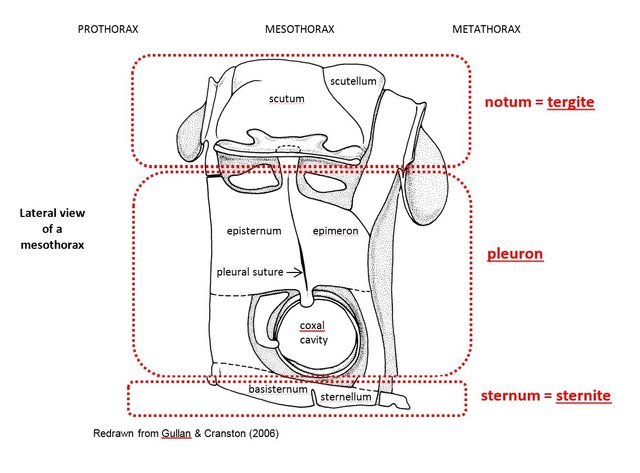 narrow, at least four times as long as broad. First posterior tarsal segment about as long as following two segments combined. Third antennal segment longer than fourth, generally longer than fifth, generally toothed (Gressitt 1951Gressitt 1951:
narrow, at least four times as long as broad. First posterior tarsal segment about as long as following two segments combined. Third antennal segment longer than fourth, generally longer than fifth, generally toothed (Gressitt 1951Gressitt 1951:
Gressitt JL. 1951. Longicorn beetles of China. Longicornia, Paris 2: 1–667, 22 pls.).
Differs from Clytini genera by having the metepisternummetepisternum:
the episternal portion of the pleuron on the posterior thoracic segment cut off by the metepimeronmetepimeron:
cut off by the metepimeronmetepimeron:
the epimeral portion of the pleuron on the posterior thoracic segment (in other Clytini the episternumepisternum:
(in other Clytini the episternumepisternum:
the aspect of a thoracic pleuron dorsal to the coxal cavity and anterior to the pleural suture
extends posteriorly), and the raised tubercles at the basebase:
the part of any appendage or structure that is nearest the body
of the elytraelytron:
the leathery forewing of beetles, serving as a covering for the hind wings, commonly meeting opposite elytron in a straight line down the middle of the dorsum in repose
.
Palearctic, Indomalaya, A. hilari known in Brazil
broadleaf trees and shrubs; Cupressaceae; Abies sp.
Three subgenera: (Anaglyptus) 48 spp., (Aglaophis) 7 spp., (Akajimatora) 4 spp. Conifers: A. (Anaglyptus) subfasciatus, A. (A.) abieticola Holzschuh, A. (A.) higashiyamai.
Anaclyptus Mulsant, 1839
Anaglyptus Mulsant, 1839